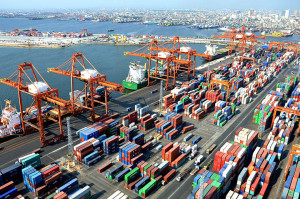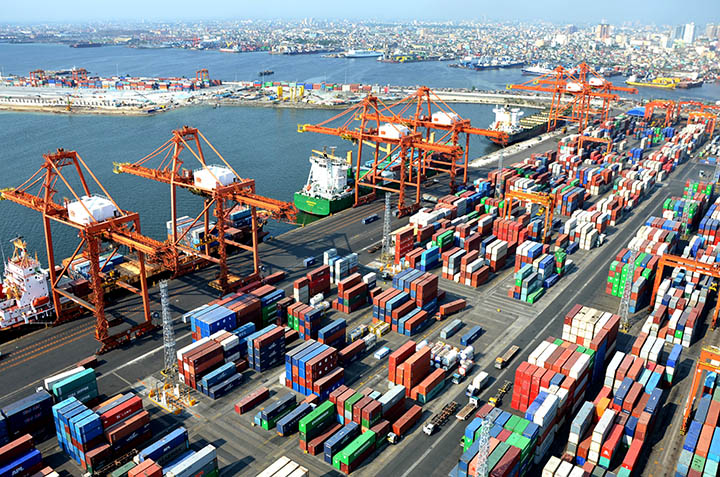
Yard utilization at international terminals in the Port of Manila continues to fall weeks after the consecutive long holidays.
As of February 20, combined utilization at Manila South Harbor and Manila International Container Terminal (MICT) was 76.5%, or about 62,300 twenty-foot equivalent units (TEUs) of combined laden and empty containers, according to the Philippine Ports Authority (PPA).
This level is 3.5 percentage point lower than the 80% utilization target set by the Cabinet Cluster on Port Congestion (CCPC). Yard utilization ranged from 75% to 79% since the five-day papal visit in mid-January, PPA said, of which three working days were declared a holiday in the National Capital Region.
The combined number of vessels waiting to berth has declined to five, and ships at berth number around five. Vessel turnaround time remains at two days, while the average yard productivity for both ports is 18 moves per hour per crane.
On January 15, a day before the five-day papal visit, the combined utilization of both terminals was at 97%, then hitting 107% on January 19, the day Pope Francis left. A few days after, on January 23, utilization declined to 93%.
The continuous decline of utilization at the Manila port “is a clear manifestation of a healthy government and private sector partnership,” according to PPA general manager Atty. Juan Sta. Ana.
“Government and private sector partnership is vital particularly as we gear towards green and sustainable port operations as well as adopting best practices and norms of today towards a fully revolutionized port operation,” Sta. Ana added.
The PPA chief echoed the sentiments of Transport Undersecretary Julianito Bucayan, Jr., who said that both the public and private sectors should recognize and play their role in coming up with a win-win solution to every concern affecting the Philippine supply chain.
He added that a sound and harmonious relationship between the government and the private sector is a key factor in achieving the country’s dream of becoming a major global player in shipping and shipbuilding.
“One of the good examples of a good government and private sector partnership is the issue of port congestion wherein both sectors agreed to sacrifice certain aspects of their operations to solve port congestion,” Bucayan said during the recent 8th Philippine Ports and Shipping Conference.
“As we continue to move forward, both the government and the private sector agreed to continue to give timely solutions in order to prevent such a situation from happening again,” Bucayan noted.
He added, “We believe that if government and the private sector have a sound relationship, we can easily address issues of trade bottlenecks not only in the Philippines but also in the BIMP-EAGA (Brunei-Indonesia-Malaysia-Philippines-East ASEAN Growth Area) as it offers very good growth areas now and in the future.” – Roumina Pablo





